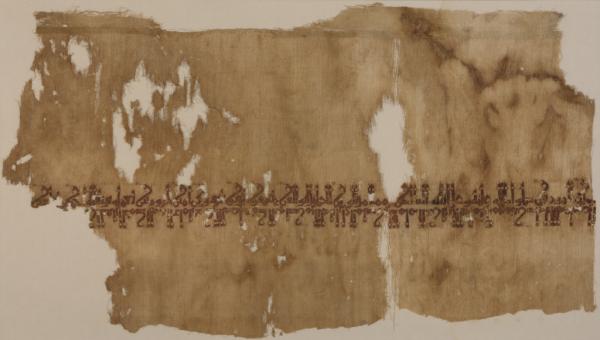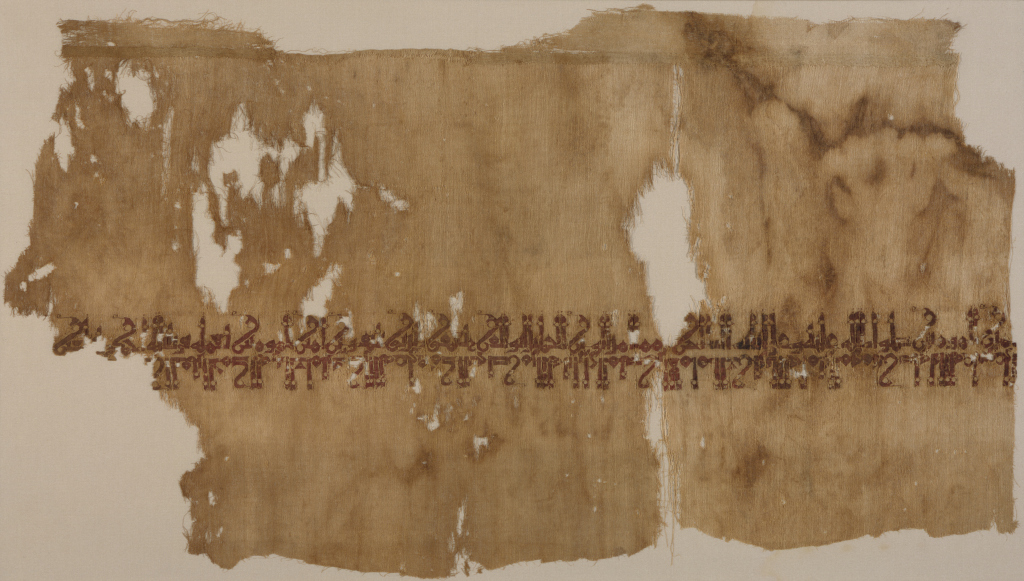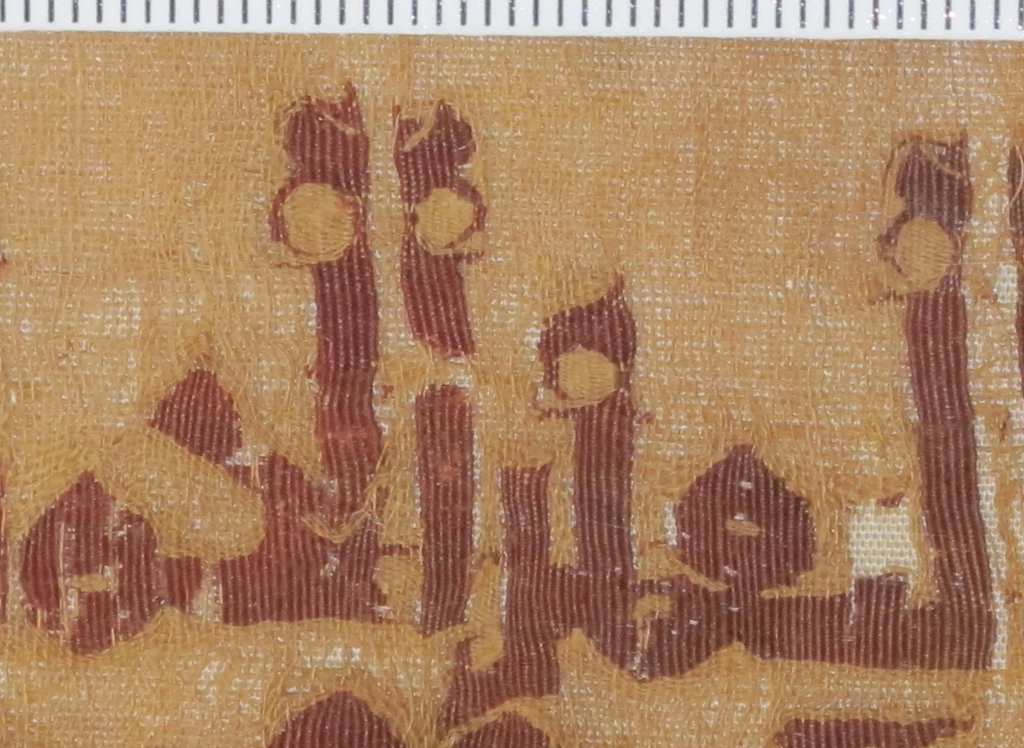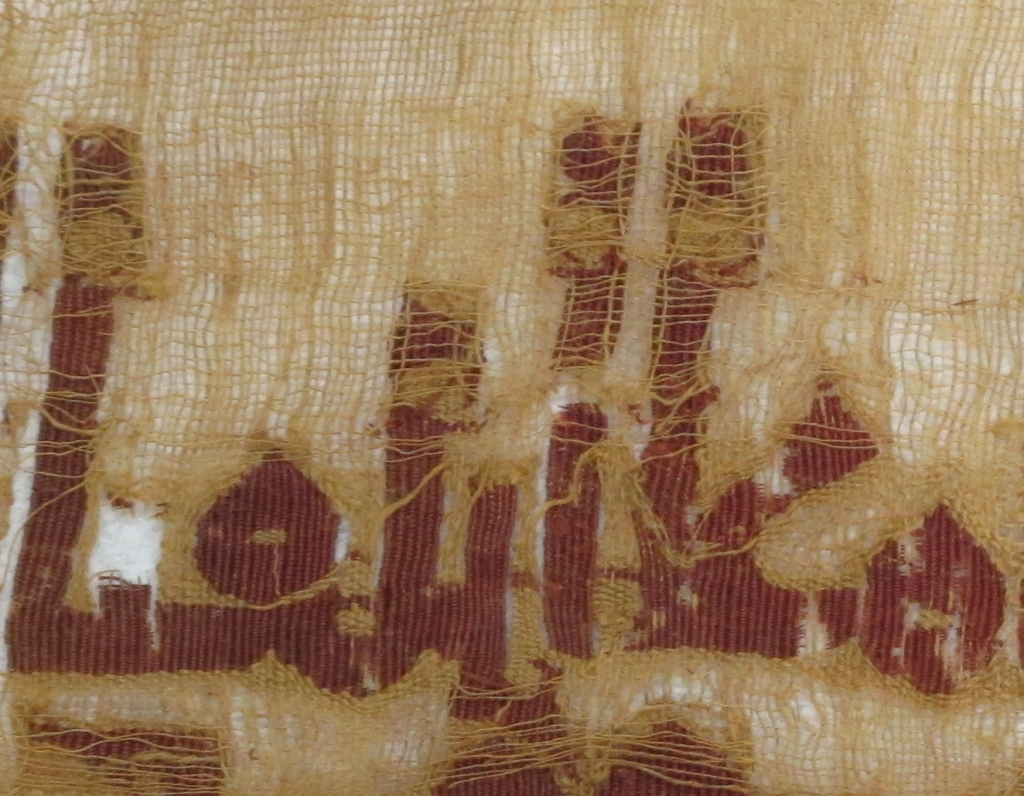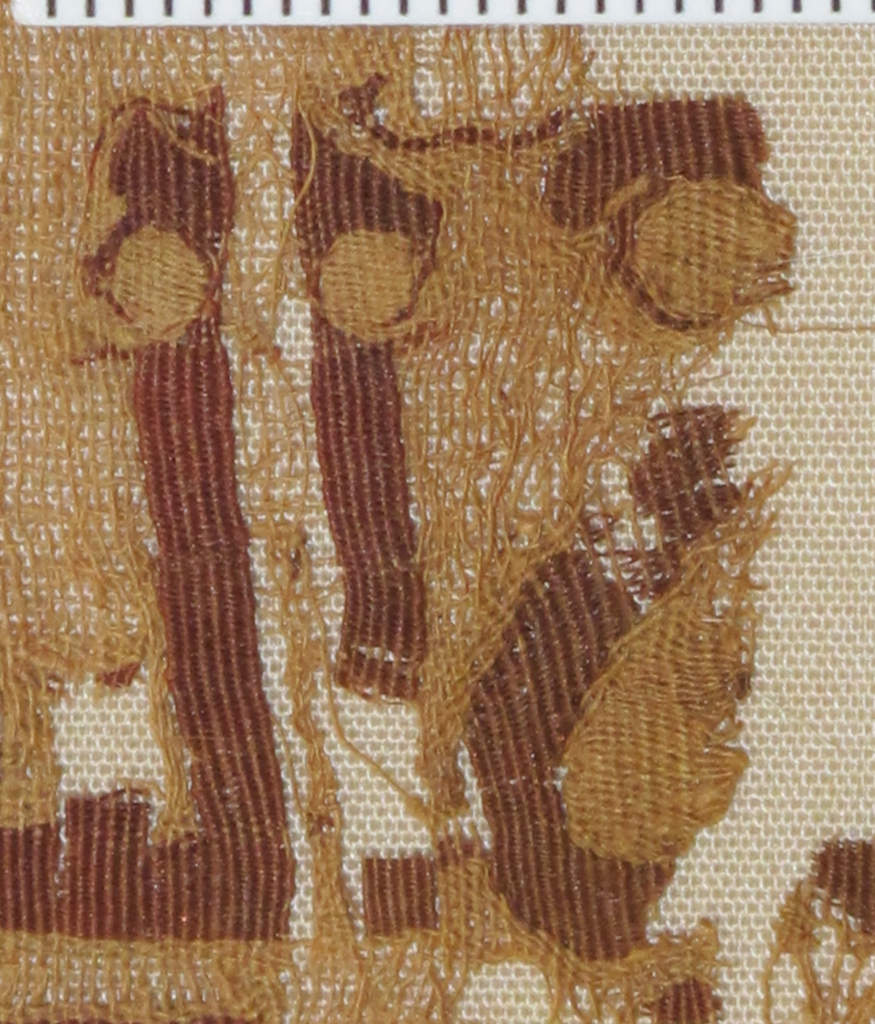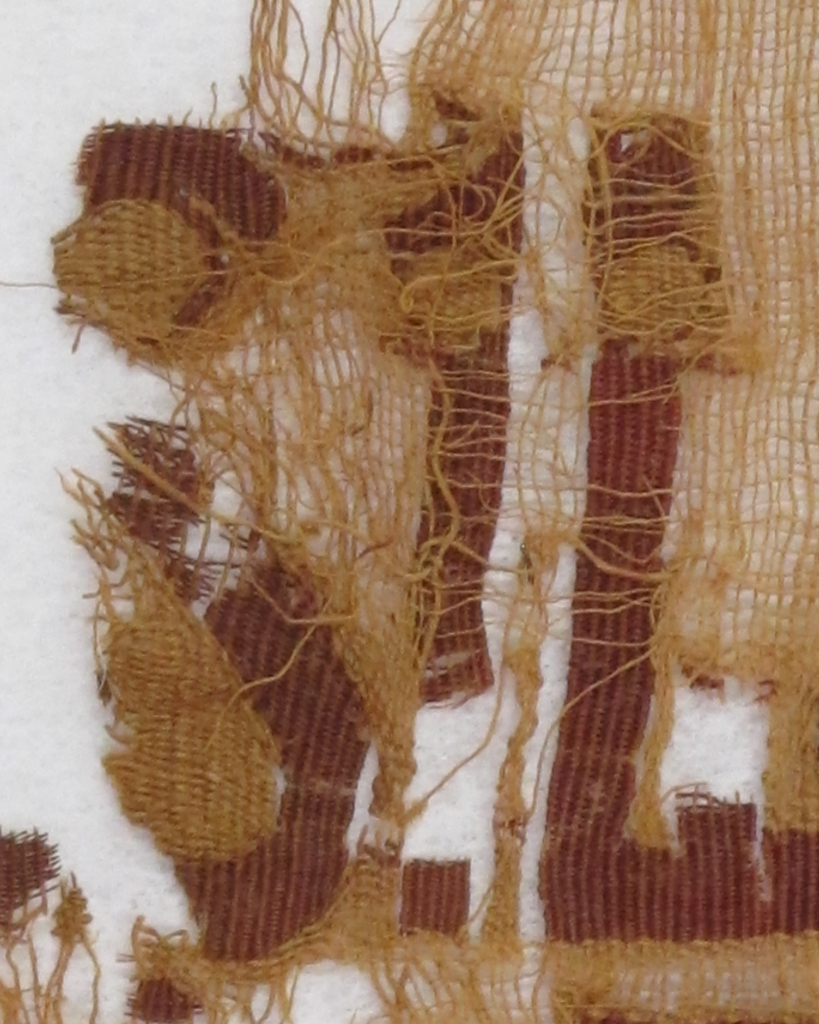At first glance, this Tiraz fragment, currently on display in Gifts of the Sultan, might be mistaken for having an embroidered or painted inscription (read from right to left; the bottom row is upside down). Closer inspection reveals that letters were formed during the weaving process using the tapestry weaving technique. So what is the tapestry weaving technique? Like a plain weave—the simplest of all weaving techniques—a tapestry weave involves weft yarns going over one warp, under one warp. Tapestry is a variation of plain weave where colored wefts still go “over one, under one,” but they are packed so closely together that the warps are completely covered. Look closely at the back of this textile and see the fine cream-colored wefts floating behind the brown and cream tapestry woven letters. A few of the warps also float behind, assuring that the bulky tapestry weave fits perfectly in place. These “floats” are picked up again after the letter is woven and weaving the cream background resumes.
This textile is too delicate to sew through with a needle and thread, so the question is, how to hang it on the wall? This is one of only a small number of textiles at LACMA that is displayed using a pressure mount. The textile is placed on a padded surface and a UV-filtering acrylic glazing (a generic term for Plexiglas) is placed directly on top of the textile and secured. There are several reasons why this technique is used as a last resort. Since reversibility is always desirable, one of the challenges with acrylic glazing is the build-up of static electricity. When lifting off the glazing, the textile can cling to it or crumple up—and no one wants to see that happen!



